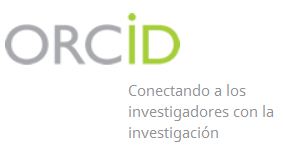Problem-solving teaching: its application to the teaching-learning process in cerebrovascular diseases
Keywords:
teaching, learning, problem-solving, methods.Abstract
Introduction: The revolution of teaching has made it possible to move from passive to productive methods, based on teaching through student activity. Among the latter, problem-solving teaching stands out particularly.
Objective: To analyze problem-solving teaching in the teaching-learning process of cerebrovascular diseases.
Methods: A literature review study was carried out through the Google Scholar search engine, in Spanish and English, and without time limit. The following terms were used: enseñanza [teaching], aprendizaje [learning], problémica [problem-solving] and métodos [methods]. Studies that dealt with problem-solving teaching were included, together with printed books and study programs on the subject. All bibliographic review or original research articles were also included, if they dealt with any aspect related to problem-solving teaching, written in Spanish or English and with enough scientific update and quality.
Conclusions: Problem-solving teaching is concluded to be applicable to the teaching-learning process of medicine both in undergraduate and postgraduate levels. In specialization, it allows the resident, when faced with a patient with cerebrovascular disease or another one including in the study program, to develop greater independence and creativity.
Downloads
Downloads
Published
How to Cite
Issue
Section
License
Los autores conservan todos los derechos sobre sus obras, las cuales pueden reproducir y distribuir siempre y cuando citen la fuente primaria de publicación.
La revista se encuentra sujeta bajo la Licencia Creative Commons Atribución-No Comercial 4.0 Internacional (CC BY-NC 4.0) y sigue el modelo de publicación de SciELO Publishing Schema (SciELO PS) para la publicación en formato XML.
Usted es libre de:
- Compartir — copiar y redistribuir el material en cualquier medio o formato
- Adaptar — remezclar, transformar y construir a partir del material.
La licencia no puede revocar estas libertades en tanto usted siga los términos de la licencia
Bajo los siguientes términos:
- Atribución — Usted debe dar crédito de manera adecuada, brindar un enlace a la licencia, e indicar si se han realizado cambios. Puede hacerlo en cualquier forma razonable, pero no de forma tal que sugiera que usted o su uso tienen el apoyo de la licenciante.
- No Comercial — Usted no puede hacer uso del material con propósitos comerciales.
- No hay restricciones adicionales — No puede aplicar términos legales ni medidas tecnológicas que restrinjan legalmente a otras a hacer cualquier uso permitido por la licencia.
Avisos:
- No tiene que cumplir con la licencia para elementos del material en el dominio público o cuando su uso esté permitido por una excepción o limitación aplicable.
- No se dan garantías. La licencia podría no darle todos los permisos que necesita para el uso que tenga previsto. Por ejemplo, otros derechos como publicidad, privacidad, o derechos morales pueden limitar la forma en que utilice el material.


